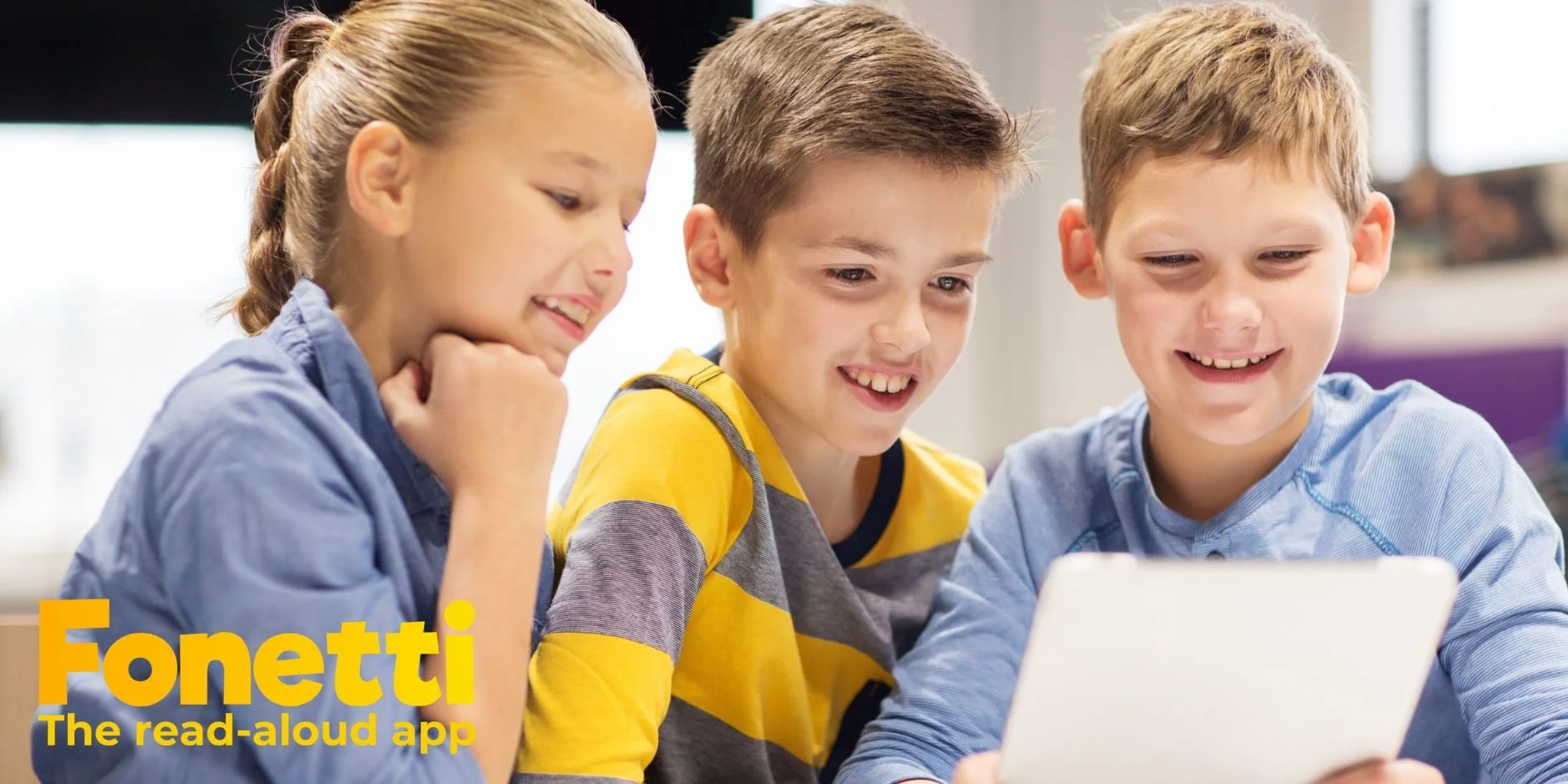How Reading Aloud Can Develop Language Comprehension
Part 2 of a two-part series on the Simple View of Reading.
When we think about helping children learn to read, it’s easy to focus only on outcomes—how many books they finish, how well they can read aloud in front of others, or how soon they become “independent” readers. But before we can talk about progress, it’s important to understand what reading actually involves.
That’s where the Simple View of Reading comes in.
Originally proposed by researchers Philip Gough and William Tunmer in 1986, the Simple View of Reading is the model that underpins the National Curriculum in England today. It breaks reading down into two core components:
Decoding (or word reading) – the ability to identify and pronounce words using knowledge of letters and sounds.
Language comprehension – the ability to understand what those words and sentences actually mean, in context.
Children need to be proficient in both of these areas to become confident, capable readers. Without decoding, they can’t read the words; without comprehension, the words have no meaning. You can think of it as a simple equation:
Reading = Decoding × Comprehension
If either skill is missing (or weak), reading breaks down.
In this two-part blog series, we’ll explore both elements of the Simple View of Reading and how reading aloud can support children’s development in each. In last week's blog we discussed decoding – also known as word reading. This week we turn our attention to Language Comprehension.
Understanding language comprehension
To put it simply, Language comprehension is the ability to understand the words, sentences and the wider context of what we are reading or hearing. It is essentially to derive meaning from what we are reading or hearing.
How Reading Aloud Supports Language Comprehension
Bridging the vocab gap
Before children begin learning to read for themselves, their understanding of language is largely developed through speaking and listening. These early interactions help them build vocabulary, understand how words fit together, and begin to recognise the patterns of language.
But not all children have the same early experiences. For those growing up in language-poor environments—where adult conversation is limited in quality or quantity—their exposure to new vocabulary can be significantly reduced. This difference is commonly referred to as the word gap, and studies have estimated that by the time children start school, this gap can amount to tens of millions of words [5].
The gap isn’t just about spoken language—it also shows up in reading habits. A study by researchers at Ohio State University found that children in households where books were read aloud regularly had heard around 1.4 million more words by the age of five than those whose parents read to them only occasionally [35].
This early deficit in vocabulary and language exposure can have long-term effects. Recognising this, the 2021 reforms to the Early Years Foundation Stage highlighted the need to support children from language-poor homes by increasing their access to high-quality spoken language experiences [36].
Reading aloud is a powerful way to do just that. Unlike silent reading, it models pronunciation, rhythm, and sentence structure, while also encouraging active engagement and listening. Most importantly, it supports the development of speaking skills, helping children use and internalise vocabulary they may not have encountered at home.
Reading aloud vs reading silently – the impact on retention and recall
Language comprehension isn’t just about understanding a word once—it’s about being able to retain and recall it when needed. These are essential building blocks for more advanced reading comprehension.
Research shows that when children read aloud, they are significantly more likely to remember what they’ve read than when they read silently [37–40]. One study involving children aged 7–10 found that participants correctly recognised 87% of words they read aloud, compared to just 70% of those read silently [40].
This difference is explained by what psychologists call the “production effect” [37]. Reading aloud involves two distinct and reinforcing processes:
An active motor act – speaking the word
A self-referential auditory input – hearing themselves say it
Together, these processes make new words more memorable. In fact, even whispering, mouthing, or writing the words out can help improve recall compared to reading silently, because these methods all engage additional sensory or motor pathways [39].
So if the goal is to build comprehension through vocabulary retention, reading aloud wins hands down.
Oral language and comprehension go hand-in-hand
The benefits of reading aloud go beyond memory. The Education Endowment Foundation (EEF), in their guidance on improving literacy in Key Stage 1, highlight the importance of explicitly developing children’s speaking skills as part of improving reading comprehension [41].
Reading stories aloud—whether by an adult or the child themselves—provides valuable opportunities for conversation. Children can ask questions, make predictions, and reflect on what they’ve read, all of which help deepen their understanding of the text.
This is supported by research into interventions for children with reading difficulties. One study found that children who participated in oral language training made the greatest gains in reading comprehension, compared to those using other types of intervention [42].
Reading aloud encourages children to process language more deeply, make connections between spoken and written language, and practise using new vocabulary in context—all essential components of strong comprehension.
Final Thoughts
When we think about reading aloud, we often picture young children cuddled up with picture books. But its benefits extend far beyond the early years. Whether it’s a five-year-old learning the rhythm of language or a ten-year-old building vocabulary through complex narratives, reading aloud remains one of the most powerful tools we have to support language comprehension.
And since comprehension is one half of the Simple View of Reading equation, that makes reading aloud essential—not optional—for every child learning to read.
So let’s keep the stories flowing. Let’s read aloud, every day, to give every child the language foundation they deserve.

